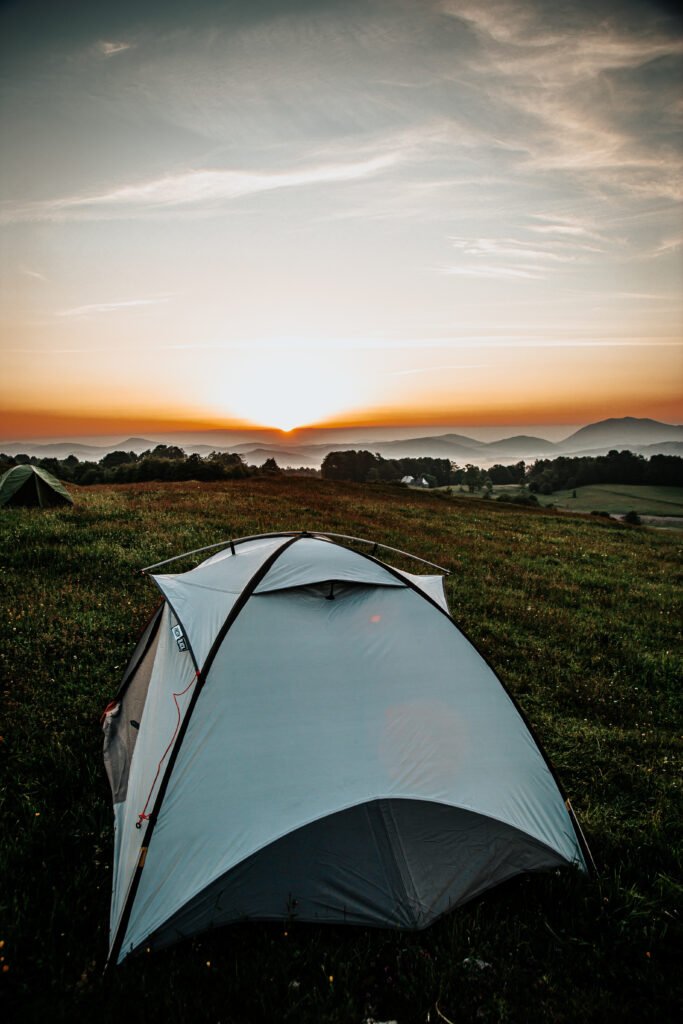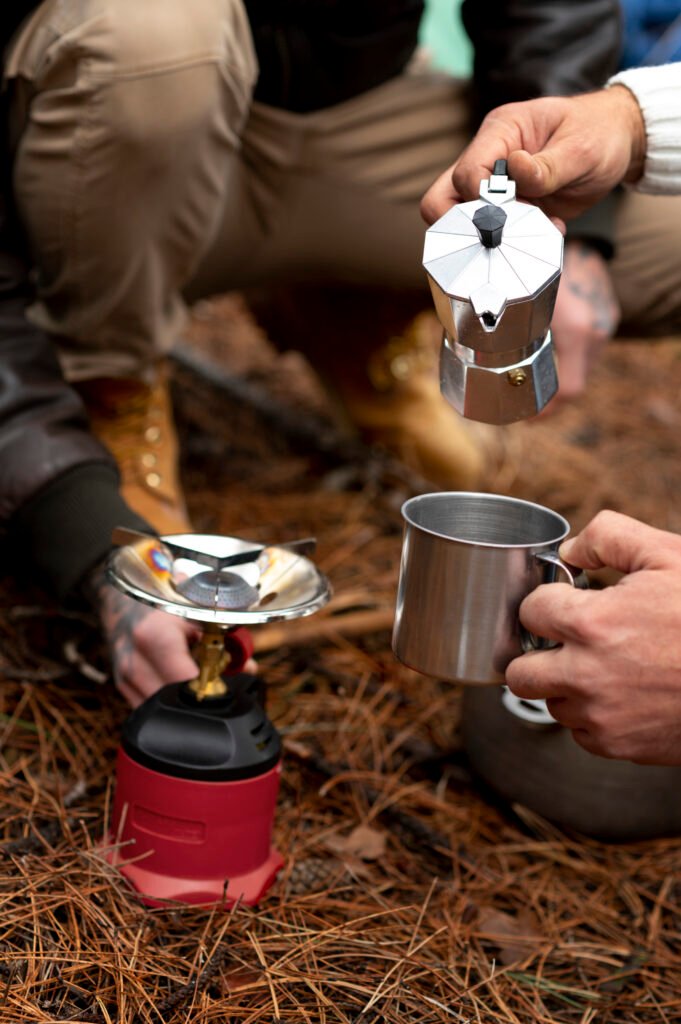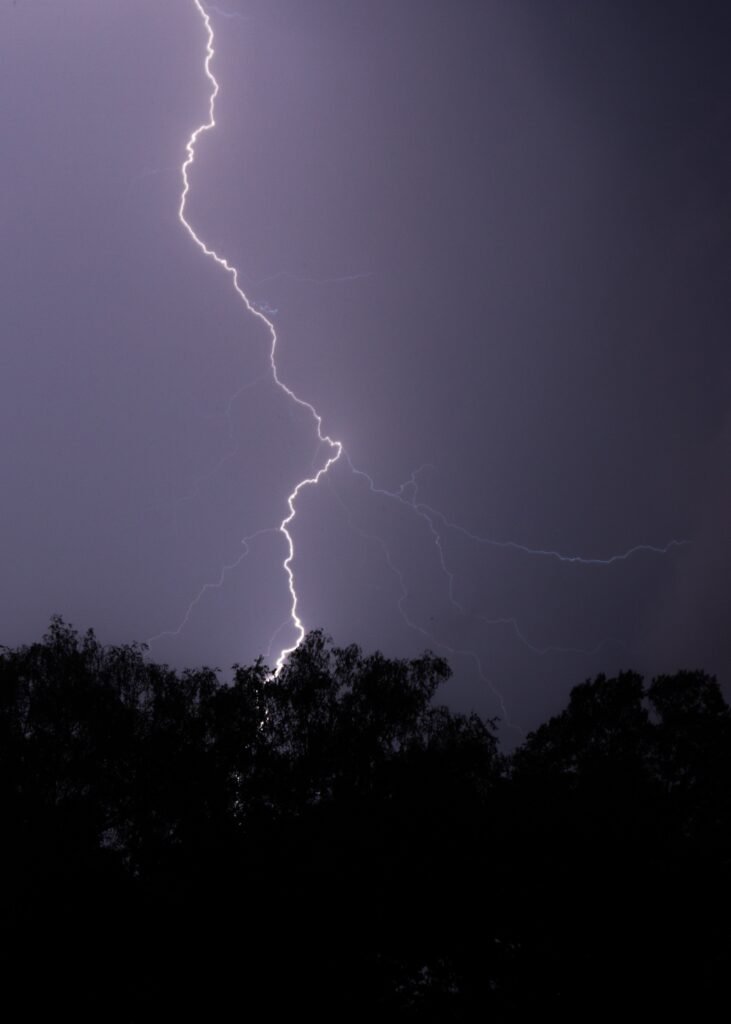Expert Tips for Pitching Your Outdoor Camping Tent Like a Pro
Camping is an excellent way to connect with nature, and knowing how to set up your tent properly is crucial for a successful trip. Whether you are a first-time camper, or an experienced camper, setting up a tent during camping is a crucial and essential skill that cannot be undermined, and you need to understand all the nitty-gritty of assembling a tent successfully. Reading a tent user manual, or watching tent setup videos, is very handy before you start your camping trip. Whether you’re an experienced camper or new to the activity, correctly pitching your tent can give you a great night’s sleep or a frustrating experience. This guide will provide expert tips on how to pitch your outdoor camping tent like a professional.
Find a suitable camping site:
One of the most critical activity before setting up the tent, is choosing the right location. A poor camping site can risk your safety, and result in a restless night. So, here is what you need to take care of

Flat Ground : Always look for a flat or level surface, so that the tent can be pitched upright and remain safe. Uneven and steep slopes can make the tent slide, and an uneven surface can also make the night very restless because you cannot sleep comfortably.
Avoid low-lying areas: Always try to avoid low spots when you pitch the tent, because if it rains, the rainwater could completely collect in the low-lying space and pool around your tent, thereby soaking the tent and the camping gear
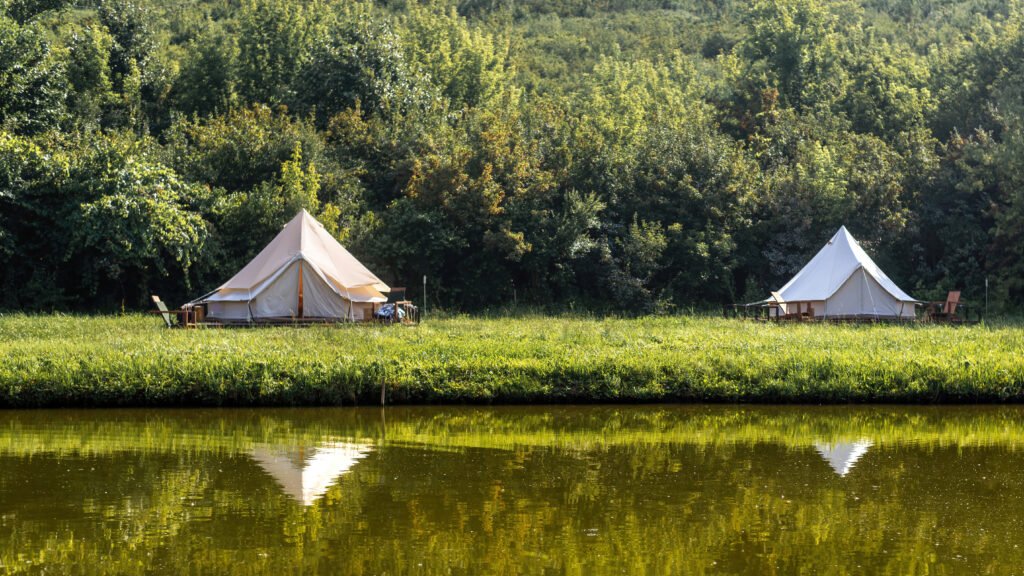
Look for shade: Make sure your tent has some natural shade and is not under direct sunlight, thus becoming a furnace. You can always choose to pitch the tent under the shade of a tree, but at the same time, make sure that it is not directly under an overhanging branch, which might be a risk if it falls off due to heavy winds.
Preparing the ground for the tent :
After choosing the perfect spot to set up the tent, it is important to prepare the ground. The ground has to be cleared from small sticks, rocks and debris so that the ground is even and comfortable to sleep on. These sharp objects sometimes might puncture your tent’s floor. It is always a good practice to use a groundsheet or footprint to protect the bottom of your tent from moisture and dirt. Taking these small steps can make your camping experience a good one.
Selecting the right tent size
When selecting a tent, it’s important to consider both its capacity and portability. A quality tent should offer enough space for all campers and their equipment while being easy to carry. Tents are typically rated based on how many people they can comfortably sleep, but choosing one with extra space is always a good idea. It should not only fit all the campers but also provide sufficient height for you to move comfortably while standing.
For instance, if you’re camping with your family, think about a 4-person or 6-person tent, depending on your space requirements. If you plan to store your gear inside, make sure the tent has enough room for it as well.
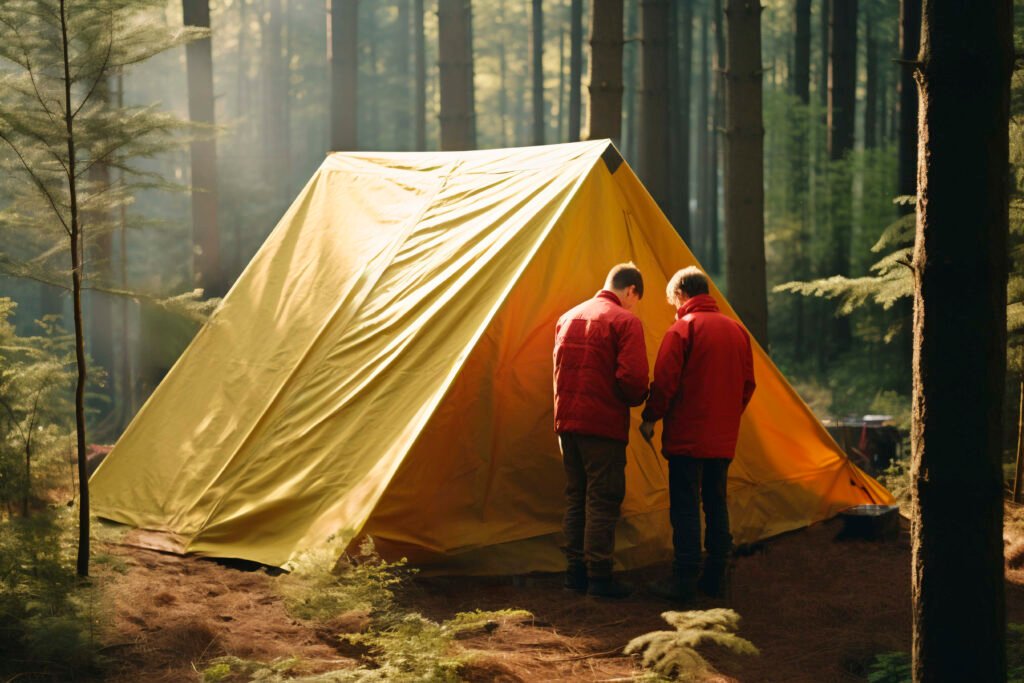
Portability is just as crucial as size. A tent that is too heavy or cumbersome to carry could significantly reduce the enjoyment of your hiking or camping trip. Lightweight tents are designed for easy transport, making them a perfect option for those looking to reduce the weight of their gear.
Step-by-Step Guide to Setting Up Your Tent
Properly setting up your tent is key to ensuring a safe, dry, and comfortable camping experience. While it’s possible to pitch a tent by yourself, having one or two friends assist can make the process faster and easier. Follow these steps to set up your tent like an expert:
a. Gather Your Tent Accessories
Begin by unpacking all the necessary parts of your tent setup. This typically includes the tent body, groundsheet (also called a footprint or ground tarp), tent poles, rainfly, pegs, and guy lines. Make sure all components are present before you begin.
b. Lay Out the Groundsheet
Start by spreading the groundsheet or footprint on your campsite. The groundsheet protects your tent’s base from rough ground, sharp objects, and moisture. If your campsite has wet grass or uneven terrain, the groundsheet will provide insulation and help keep the inside of your tent dry. Ensure the groundsheet fits the size of your tent and is properly aligned.
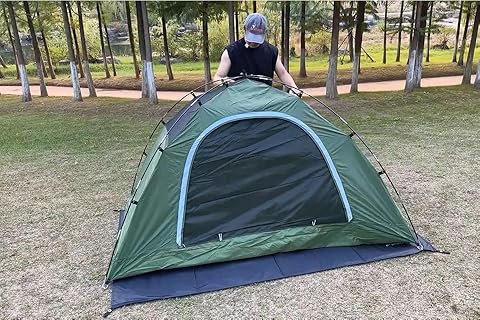
c. Consider Tent Orientation
After laying out the groundsheet, choose the direction your tent will face. Be mindful of the wind direction, ensuring that the entrance faces away from strong winds. This will help keep your tent stable and minimize wind exposure, preventing it from being blown over or damaged.
d. Assemble and Insert the Tent Poles
Next, unfold and assemble the tent poles. Most poles come in sections that need to be connected to form longer poles. Once assembled, carefully slide the poles into the fabric sleeves or pockets on the tent body. Ensure the poles are securely in place, as they will provide the structure for your tent.
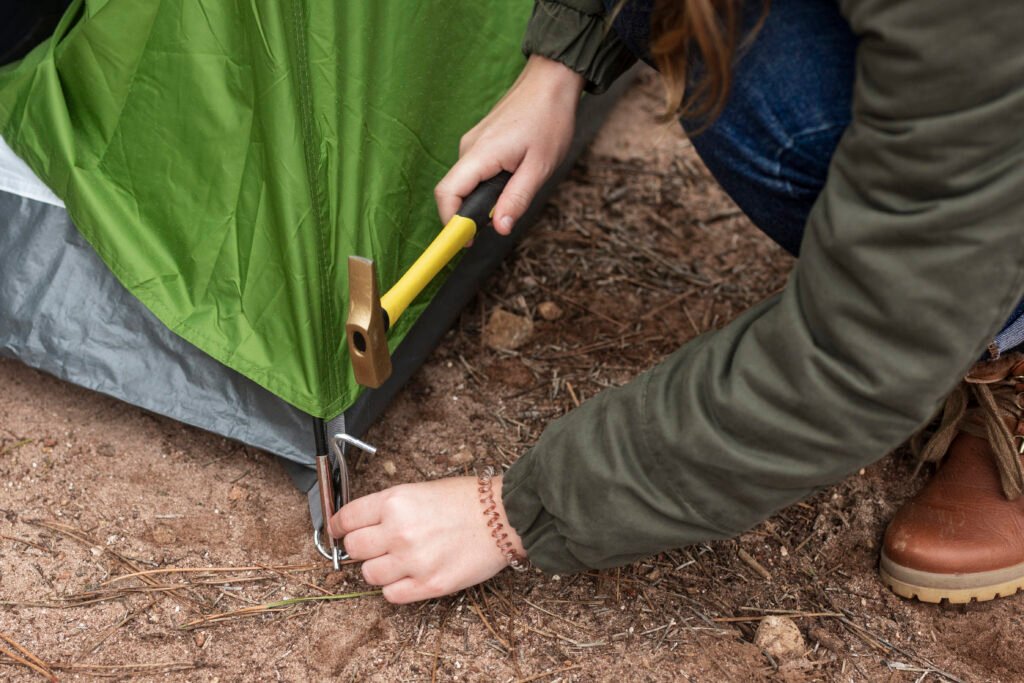
e. Raise the Tent
Once the poles are in place, raise the tent by lifting the poles and allowing the fabric to stretch into position. Some tents require you to clip the fabric onto the poles, while others use a different mechanism to secure the structure. After the tent is standing, make sure it is stable and even.
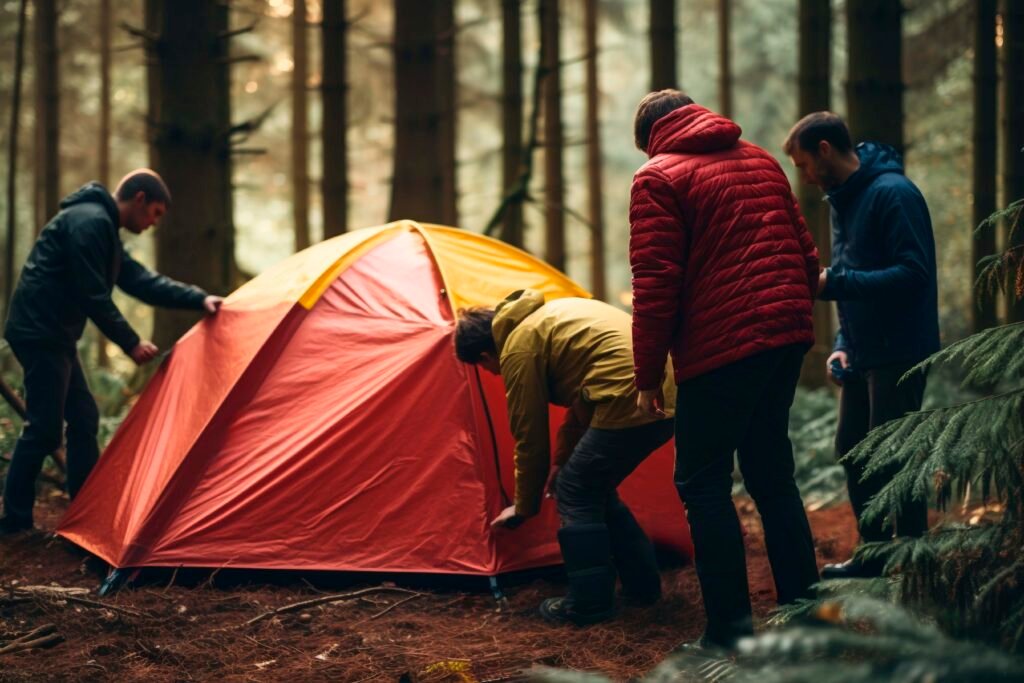
f. Secure the Tent to the Ground
It’s time to stake the tent. Use the provided pegs or stakes to anchor the corners and edges of the tent to the ground. Insert the stakes at a 45-degree angle to maximize support. This ensures that the tent stays grounded and won’t be blown away in strong winds.
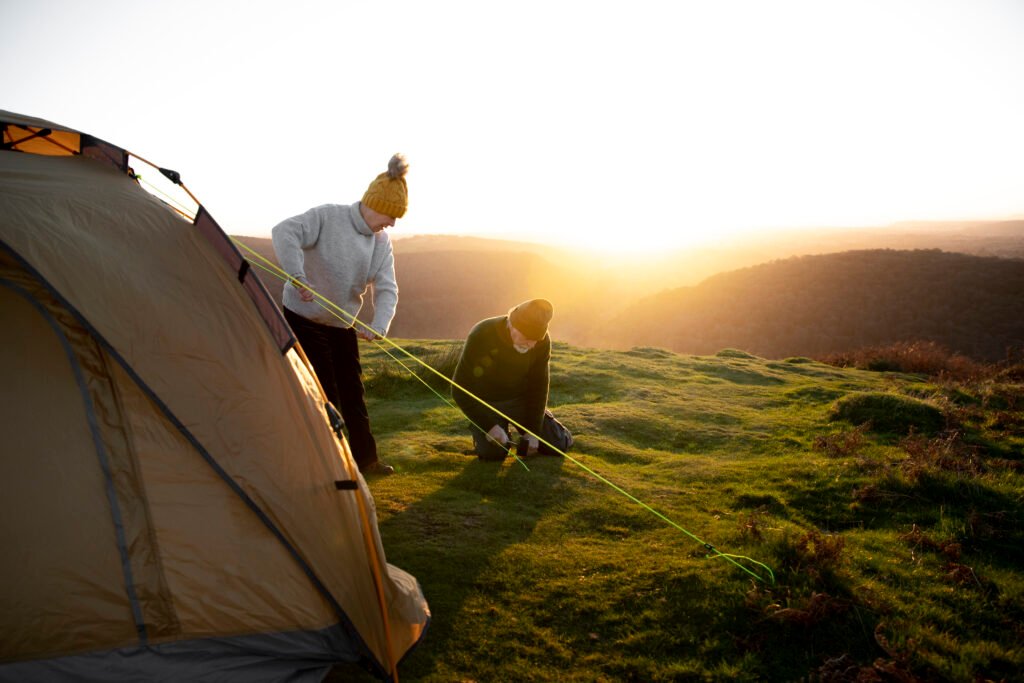
g. Attach the Rainfly
The rainfly is a crucial part of your tent setup, particularly if you’re camping in uncertain weather. It provides a waterproof layer that keeps rain and moisture out of the tent and directs water off the sides. Attach the rainfly by fastening it to the tent body using clips, fasteners, or Velcro tabs. Ensure the rainfly covers the entire tent, including the doors and vents, to offer full protection from the weather.
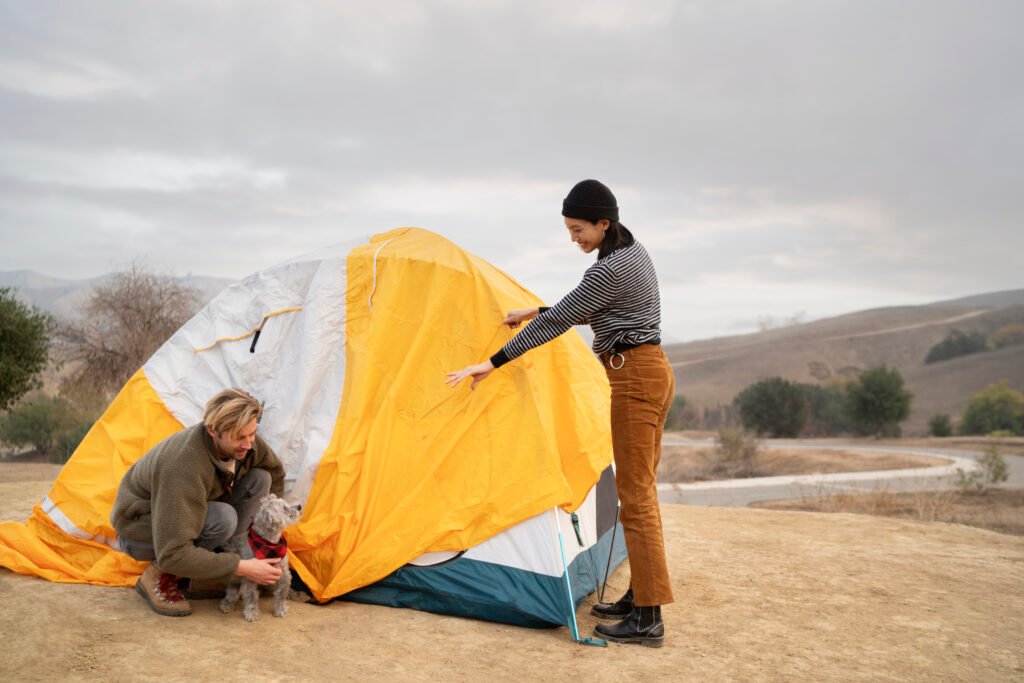
Final Checks and Adjustments
After setting up the tent, take a few moments to do a final check. Make sure the tent is taut with no sagging areas where water could collect. Double-check that the rainfly is properly attached and extends enough to prevent water from entering your tent. If you’re camping in a windy area, tighten the guy lines to further stabilize the tent.
Enjoy Your Camping Adventure
With these steps completed, your tent should be ready for a safe and cozy night under the stars. With the right location, setup, and equipment, you’re prepared for any outdoor adventure—from peaceful mountain hikes to lakeside getaways.
By following these expert tips, you’ll be able to pitch your tent with confidence, ensuring a safe, enjoyable, and stress-free camping experience. Whether you’re an experienced camper or a beginner, these basic techniques will help you create a secure shelter that can withstand the elements, keeping you comfortable throughout your time in nature. Happy camping!














